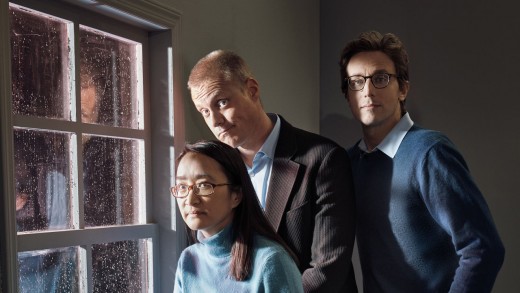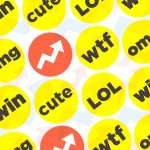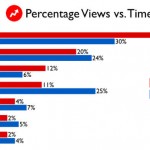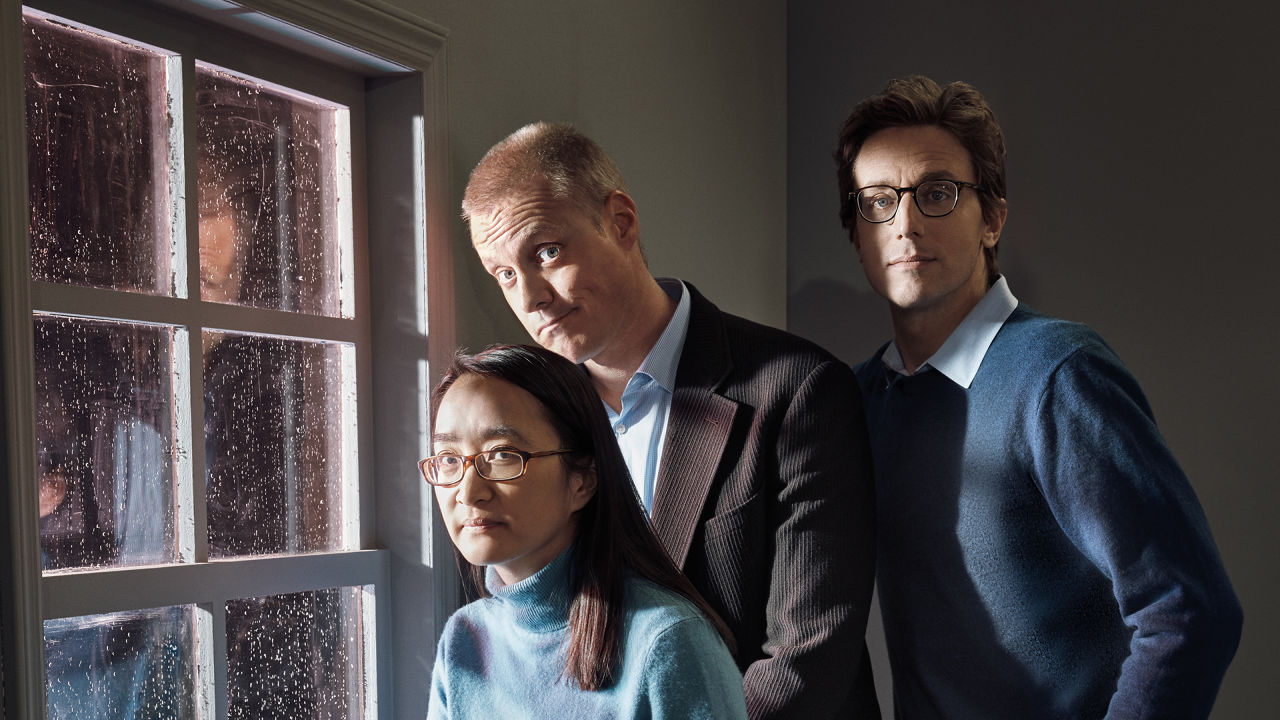How BuzzFeed’s Jonah Peretti Is constructing A a hundred-year Media firm
Ask BuzzFeed CEO Jonah Peretti about his influences, and his resolution sounds like, smartly, a BuzzFeed submit—one titled “The Three historical References That give an explanation for BuzzFeed Will Make You Say WTF.” Peretti first points to a company that started greater than a hundred years ago, Paramount photos, which owned a film manufacturing studio, its personal forged of talent, and its own distribution channel in the type of theaters. “That allowed them to adapt and change as the market modified,” says Peretti.
Peretti’s second fascination is with CNN—how founder Ted Turner ran a 24-hour news operation at a fraction of the price of what the networks spent, due in part to prescient use of satellite tv for pc and cable know-how.
after which there’s Jay Z. in the early Nineteen Nineties, Peretti, who grew up in Oakland, California, attended public faculty where, he says, “the one track was black music.” The lyrics have been filled with boasts—selling extra albums, incomes extra money, amassing more bling. Later in existence when Peretti, now forty two, made chums with individuals who loved indie rock bands, he noticed “this weird factor the place it’s like, the band that they love, they go to all their shows, but as soon as they have got a document deal, ‘I don’t like them anymore.’ ” There was once a similar attitude among bloggers, he says, who had a “deeply tortured relationship with reputation. The mainstream media is in some way evil, unhealthy, or selling out.” Peretti didn’t share this angst. “With BuzzFeed, I always felt like, let’s have as big an impact as we can. Let’s grow this into one thing massive.”
Or, as Hova himself as soon as rapped, “I’m to this point ahead of my time, I’m bout to start out any other life / look at the back of you, I’m bout to go you twice.” BuzzFeed has built its success, like Paramount a century ago, by way of owning all the components of a brand new media industry: a world information staff, its personal video professionalduction studio, a sophisticated information operation, and an in-home inventive advert agency. just as Ted Turner embraced cable earlier than cable was once cool, Peretti has pushed BuzzFeed to tailor its content to every emerging social channel, from Snapchat to Pinterest. And BuzzFeed is increasing globally, from the U.k. to Brazil, India to Mexico, Germany to Australia.

a lot of this transformation has taken position within the prior two years. The “bored-at-work network,” as Peretti himself as soon as called it, was once basically a single U.S. website online. In late 2014, he foresaw that folks wouldn’t want to leave their social apps, so Peretti drastically shifted his firm’s strategy: as an alternative of looking to trap eyeballs to its personal site, the way most publishers do, BuzzFeed would publish authentic textual content, photography, and video in an instant to where its audience already spent its time, some 30 totally different global systems, from fb to the Russian social networks VK and Telegram. slightly than write one definitive article and post it on each platform (the de facto same old in the media business), BuzzFeed would tailor content material specifically for the network and target market the place it’s being considered.
How’d that end up? throughout all of the structures the place it now publishes content material, the company generates 5 billion monthly views—half from video, a industry that successfully didn’t exist two years ago. traffic to the web site has remained regular—80 million people within the U.S. each month, putting it ahead of the new York instances—despite the fact that as a lot as 75% of BuzzFeed’s content is now revealed in different places.
This transfer also creates new income alternatives as services and products like fb, YouTube, and Snapchat are seeking for to prove they may be able to funnel money to partners who put up right away to their platforms. in the fourth quarter of 2014, “15% of our earnings was derived from video,” says BuzzFeed president Greg Coleman. “Fourth quarter of [2015], 35% of our complete income is video.” The privately held BuzzFeed does no longer element its financials, but leaked paperwork remaining summer revealed that the company used to be rising at about 200% yearly, on p.c. to generate $a hundred million in 2014, and used to be the rarest of things for an web startup: winning.
BuzzFeed has grow to be the envy of the media world for its reputedly magical capacity to engineer tales and commercials which can be shared widely—whether or not it’s a costume that appears to be both white and gold or blue and black, an investigation into taxpayer-funded “ghost schools” in Afghanistan, or an older cat imparting knowledge to a kitten on behalf of Purina. opponents within the insular media world carp that BuzzFeed is gaming fb’s algorithm, or buying advertisements to pump up its content, and both are unsustainable; viral smashes like the dress are mere luck; even traditional manufacturers similar to The Washington publish can beat BuzzFeed with their own visitors-oriented gambits.
What’s lost here’s a actual figuring out of what Peretti, one of the most world’s most astute observers of web conduct, has constructed. the company’s success is rooted in a dynamic, studying-pushed tradition; BuzzFeed is a steady remarks loop the place all of its articles and movies are the input for its sophisticated information operation, which then informs how BuzzFeed creates and distributes the advertising it produces. In a diagram exhibiting how the device works, Peretti synthesized it all the way down to “information, learning, bucks.”
everybody who’s ever shared a BuzzFeed put up on fb thinks they take into account the company. but to really get it, one has to consider all of BuzzFeed, as I did during a months-lengthy exploration of its video, knowledge, editorial, and advertising operations. “If we in reality learn what works on Snapchat, Instagram, Twitter, YouTube, and facebook,” Peretti says, “and we in fact research what works in Brazil and the U.k., and we can figure out a technique of sharing that information, we should have a greater figuring out of tips on how to make great content material that people love.” Peretti likens BuzzFeed’s secret to a fleet of self-driving vehicles: each automotive learns from every different autonomous vehicle on the road, so eventually they’re all hundreds of instances smarter.
the opposite secret to BuzzFeed’s success is a tradition that embraces steady trade but is still devoted to data-driven metrics. That’s a tricky aggregate, however crucial for any company hoping to thrive in today’s tumultuous industry climate.
“i love Hollywood. i love motion pictures. I grew up on them. i love tv presentations,” says Ze Frank, the top of BuzzFeed motion photos. “the way in which that stuff is made, however, doesn’t work necessarily in this surroundings.”
satirically, Frank, whose workforce publishes about sixty five unique movies per week—for YouTube, facebook, Snapchat, in addition to for brands—is announcing this from within a fifty two,000-sq.-foot production studio on sunset Boulevard within the heart of los angeles. There’s a soundstage, a take a look at kitchen, a prop room as massive as a vintage store, two bungalows with rooms that serve as reusable indoor units, and a transparent view of the Hollywood sign from the roof. in brief, the new digs have everything one would predict in a standard movie studio.
but Frank, a performer whose rubber-faced, staccato monologues on The express back in 2006 created the cultured for the first wave of YouTube stars, runs a decidedly non-Hollywood store. There’s a clean lack of pretension, partly because he’s kept away from the hyperspecialized variation utilized in traditional video production where a creator may by no means see a gaffer or even understand what that person does. (It’s the chief electrician on set, if you’re questioning.) everybody at BuzzFeed motion footage is “multihyphenated,” says Ella Mielniczenko, 25, a author-producer-performer for the series You Do You, an all-feminine scripted comedy that you should binge-watch together with women. “i can write higher as a result of I take note how I’m going to execute it and make it,” she tells me. “i can direct better as a result of i do know what it’s prefer to be in front of the camera.”
Frank’s multihyphenates are prepared into groups—continuously coloration-coded—of not more than seven people, every dedicated to a type of video, reminiscent of those who promote racial equality (“If Latinos said the Stuff White people Say”) and “franchise” codecs similar to response videos (“Celebs Watch Animal Births”) and Moments (“Awkward Moments you realize Too smartly”). To make sure that no person will get complacent, your complete workforce is reorganized into totally different teams each three months. Frank believes that this keeps the inventive process from becoming calcified and helps producers unlearn habits. “There’s this highly articulated method of creating video that started a hundred years ago,” says Frank, who has overseen the making of more than 7,000 movies in the three years when you consider that Peretti bought him to join BuzzFeed via buying his startup. “The modern probability necessarily implies that you have to question nearly every one of those decisions. issues like, ‘will have to we be talking about story as the top vehicle for video versus a moment or a personality?’ ”
Mielniczenko’s collection epitomizes BuzzFeed’s up to date manner. You Do You focuses on the interplay among the many major characters, Ashly, Ella, Quinta, and Sara, as they explore explicit moments of their lives. The narrative arc that’s woven in the course of the episodes—going to a pal’s wedding ceremony together—is secondary at easiest. closing fall, BuzzFeed made up our minds to bundle the 12 episodes of You Do You for $2.ninety nine on iTunes, the first time it offered its content material immediately to the general public. The collection hit No. 1 on the top television Seasons chart the week after its unencumber, beating The strolling dead and Fargo.
BuzzFeed’s video plans additionally embrace a partnership with Comcast’s NBCUniversal (which invested $200 million closing summer season) around the 2016 Olympic games in Rio. whereas NBC works on its traditional (and arguably calcified) “up close and private” television segments on prospective American Olympians, BuzzFeed was invited to movie its personal interviews. They requested the athletes goofy questions, such as, “have you ever ever considered a live turkey?”—after which unleashed a turkey on set to capture athletes’ reactions. the result is “a video that they suspect is going to move mega-vi,” says NBCUniversal CEO Steve Burke. That’s shorthand for “mega-viral,” by the way—and no, Burke had by no means heard the term before both.
If BuzzFeed movement pictures feels chaotic—as if there’s a are living turkey on set each day—it’s as a result of that’s exactly what Peretti desires. “If individuals are in some highly structured group, it’s laborious for anyone to be creative,” he says. “It’s arduous for folks to make new issues without autonomy and freedom.”
Peretti’s administration philosophy stems from his early career as a instructor—and, he contends, from watching his youthful sister Chelsea bloom right into a prime stand-up comedian. “the best lecturers don’t just say, ‘i’ve a great way of speaking or connecting with the students.’ additionally they exchange what they’re communicating. They recall to mind a new curriculum that they understand the coed will be desirous about.” As for his sister, who’s now an ordinary on the Fox series Brooklyn nine-9 and of whom he’s certainly very proud: “What I realized from Chelsea and gazing the best way comics work is that they would tell a joke, after which the comic story doesn’t reasonably join, so they try and tell the joke a unique manner.”
To thrive at BuzzFeed approach studying to roll with it. “BuzzFeed is this insane morphing rocket ship,” Emily Fleischaker, a ingenious director overseeing one of the vital company’s most popular residences, food, tells me all over a travel to her decrease long island take a look at kitchen, which was once previously situated inside her condo. “each three months it’s a must to be ready for anyone to return in and be like, ‘You’re going to report to this individual now, and your desk isn’t the place it was.’ ”
“And we’re transferring houses day after today,” chuckles Peggy Wang, the editorial director of the lifestyle staff, who was also a scholar of Peretti’s within the Nineteen Nineties. (BuzzFeed’s new york headquarters moved 5 blocks south in early 2016.)
“and you have to be like,” Fleischaker chimes in, snapping her fingers, “ ‘All proper, let’s do that!’ ”
Adaptability is a specifically helpful trait within the digital media world at this time. (Peretti himself relocated to L.A. in January, ostensibly because his wife prefers the West Coast, though he stated in a body of workers e mail saying the move, “BuzzFeed’s 2nd-greatest and fastest-growing staff is based totally in L.A.”) As he factors out, the medium is still in its infancy: in the decade for the reason that BuzzFeed was based, our laptop utilization has migrated from pc to cell; we’ve shifted from browsing the net to using apps; and nonetheless photography are being usurped via are living video streams that embrace chat. Peretti’s potential to frame the tech shifts which might be upending content material introduction and consumption is why project capitalists love him. “When he [Peretti] hangs out with us, he speaks tech natively and media with an accent,” says Chris Dixon of Andreessen Horowitz, who led a $50 million investment in BuzzFeed in 2014.
BuzzFeed is Peretti’s imaginative and prescient, formed by way of his restless curiosity. In highschool, he saved his money from doing yard work to purchase a Macintosh pc. He discovered the Netscape browser as a sophomore in college, and upon commencement from the university of California, Santa Cruz, interviewed at a tech startup however determined that a $24,000-per-yr job educating computer systems at an individual school in New Orleans was once more fascinating. He landed on the MIT Media Lab, the place his thesis was once a tool authoring software for the classroom. Cofounding The Huffington post in 2005 was Peretti’s introduction to startups and business, however a yr later, he wished to move off and test once more. HuffPo’s traders gave him just a little seed capital as a result of “they wished me as a way to preserve doing Huffington publish,” he says. “It was like, ‘Oh, Jonah’s doing his little R&D lab.’ ” He stayed on unless 2011, when AOL received HuffPo for $315 million. best then did BuzzFeed become Peretti’s sole focus.
even though BuzzFeed at present employs roughly 1,200 people and is valued at $1.5 billion, Peretti nonetheless generally thinks of it as his educating workshop. Now, as the company is attaining a measurement the place it has to behave like a real business, Peretti is discovering the way to harness the chaos, simply sufficient, to pass-pollinate concepts across departments. “plenty of what we are engaged on organizationally is, How can we create buildings the place there’s quite a lot of local autonomy plus some global coordination?”
It’s a crisp fall afternoon in October and Matt Stopera, a 28-year-old BuzzFeed senior editor, is discussing hoverboards—”a excellent, funny recent instance of one thing the place we had been a little too soon,” he tells me. “a few weeks in the past, we did a publish on individuals failing. They’re falling.” once I inform Stopera that I saw the piece all over the place on Twitter, he’s dismissive. “In our Twitter world,” which means media and tech experts, “everyone was once speaking about it, but in the actual world, individuals aren’t in point of fact talking about it.”
Stopera, an web savant so steeped in pop culture that he appeared on an episode of MTV’s Fanography as a teen for his “psychotic” love of Britney Spears, is explaining how he and his 500-plus peers within the editorial department outline success. They rely on an inner proprietary metric, often called “viral raise,” that quantifies how much and the way fast a section of content is shared. “If one thing has a 1.5 viral lift and 100,000 views and above, that was once price doing,” he tells me. “It’s a failure you probably have four hundred,000 views and a 1.1 or 1.2 carry. That’s a flop.”
Most publishers would understand the post with 400,000 views to be the success, but at BuzzFeed sharing is paramount. As Stopera explains, “It wasn’t shared. It used to be all seed. The fun in the recreation is getting folks to share one thing. I click on on shit all the time. ‘Oh, let’s look at what this individual posted on Instagram,’ and also you noticed their butt cheek. It’s like, click on, but I’m now not going to share it.”
“I take no responsibility for what these insane newshounds duvet,” says Dao Nguyen, the data maven whom Peretti named writer in October 2014. (Editor-in-chief Ben Smith manages the journalists.) She is, however, entrusted with determining how articles and videos go back and forth throughout all the structures where BuzzFeed plays. “historically, publishing supposed proudly owning a printing press and dealing with supply vehicles and newsstands,” says Nguyen, forty two, who in fourth grade was once caught debugging software code as an alternative of doing category work (her punishment used to be to software a state capitals quiz for your complete class). “With digital media, getting your content to the general public is all about your technical platform and your distribution plans on social networks.”
As Peretti explains, “what’s the competitive advantage that you could gain as a publisher these days? You’re not going to inherit one or get one given to you by means of a spectrum grant,” he says, relating to the historical advantages of a family-run newspaper or a radio station. “Having technology, data science, and being able to recognize take care of, optimize, and coordinate your publishing is the object that provides you a aggressive benefit.”
to illustrate how BuzzFeed is inspecting social sharing and the way that will affect the corporate, Nguyen takes me to satisfy Andrew and Adam Kelleher, the ginger-haired twins who lead the Pound challenge. Andrew, the engineer, and Adam, the info scientist, provide an explanation for that Pound is a method for BuzzFeed to take into account how people share content material across totally different social networks. Let’s say I find a fascinating article on Twitter after which copy the hyperlink and post it to fb, the place certainly one of my friends reshares it to his community, and then a type of people puts it back on Twitter. Pound connects the dots to indicate how I’m linked to that friend-of-a-good friend who put it again on Twitter, even when that social chain—the “propagation graph”—is a number of hyperlinks deep and contains multiple structures. “facebook only sees how content material flows within its own network,” says Adam. “It doesn’t see the way it is hooked up with different ones.”
this is a unique knowledge set, and the Kellehers, whose folks put coloured dots on their eyeglasses to inform them apart as children, have provide you with 9 different metrics to quantify all of it, together with the “propagation charge between nodes.” That one’s specifically treasured as a result of it measures the period of time it takes for a bit of content to be shared between two individuals, and if that occurs at an rising rate, it’s a just right sign that something is going to go mega-vi.
“in case you call to mind the route of human historical past,” Adam adds, “we’ve seen regularly growing propagation rates within pairs as we’ve more advantageous our telecom infrastructure.” From telegraph to phone to e-mail to fast messaging, knowledge has moved faster and in higher quantities, spurring financial and social changes in the process.
gathering huge quantities of information over time has allowed BuzzFeed to study, amongst other things, that while ideas get an early start on Twitter, they go broad and turn out to be standard on fb (which is what Stopera understood about hoverboards). The staff is even beginning to snatch how an idea spreads if it’s seeded among sure kinds of individuals on a particular social community. “we can make predictions about how a particular piece of content should spread through this network based on where it starts,” says Duncan J. Watts, a sociologist with Microsoft research and early BuzzFeed adviser who helped devise Pound. That’s why you might see an article titled “Guys Confess Secret the reason why They Cry” on a web page dedicated to stories about cats.
Pound’s insights assist BuzzFeed acquire a deeper figuring out of its target market. but Pound is just one piece of an much more audacious information initiative called Hive that promises to make its editorial content more shareable than ever.
no one—no longer Peretti, Nguyen, or somebody else—in reality has a precise concept how many items of content material BuzzFeed creates or where it all will get revealed. lately, inside teams screen their output the use of Google Spreadsheets and Slack—a hack that fails to compare BuzzFeed’s increasingly more sophisticated distribution device.
One purpose of Hive is to track every editorial thought, even ones that aren’t printed, throughout all of BuzzFeed’s many platforms. A seven-step web recipe for gradual-cooker rooster becomes a 46-second fb video, after which a 15-2nd Instagram clip with the instructions written as a comment, and at last a Pinterest put up with two images and a hyperlink back to the fb video. And if it’s happening Snapchat, it must be shot in portrait mode as smartly. It’s all the exact same recipe, but “we put it on fb, and we put it on YouTube, and we put it on AOL and Yahoo,” says Hive lead Jane Kelly, “and abruptly it’s 15 different MP4 recordsdata.” soon, every piece of content material produced can be uploaded into a valuable database and assigned a novel id.
Hive will enable BuzzFeed engineers to create many other useful tools, including with the ability to observe how smartly something like that slow-cooker recipe performs because it migrates from Twitter to fb to Snapchat. What’s more, it knows how every piece of content material is expounded—whether or not it was about the same topic or featured a selected actor—and how well it linked with an target audience. If a writer is going to do a put up about pizza, Peretti says, “you will have to see the entire things that the audiences have beloved about pizza, you must see what folks have finished ahead of,” he explains, “then construct on high of that.”
Take, as an example, the sequence about brief-lady problems: It commenced with an article on the web page that attracted greater than eight million views, titled “30 Awkward Moments every short lady knows”; it then was a scripted YouTube video (“10 problems most effective brief ladies consider”); and indirectly it inspired a cool animated film titled Trans lady issues that seemed on fb. Hive will velocity the editorial evolution of widespread ideas like this one.
From a technical perspective, Hive is each simple—possibly 5 tables in a relational database—and absurdly summary. One diagram Kelly displays me has a pipe labeled pixie dust as well as an animated super Mario leaping up and down on a part of it.
“We think of it as like a Voltron,” says Nguyen, referencing the schlocky Nineteen Eighties cool animated film starring an ideal robot. each and every platform is a smaller robotic, and the blended learning about what works across all of them make BuzzFeed “like an even more highly effective robotic that no person can defeat.”
Voltron, er, Hive can be increasingly more important as BuzzFeed expands globally, to determine what works throughout borders. Like its approach to different social networks, BuzzFeed objectives to create something natural in every world market somewhat than simply translating an article into any other language. “We don’t want to be considered as an American firm that’s going into these local markets spreading the gospel of yankee pop web culture,” says Qichen Zhang, a world product lead. higher that BuzzFeed find content material in a ways-flung locales that appeals to everyone across the globe. Peretti, channeling Marshall McLuhan, believes BuzzFeed will prevail globally on account of the upward thrust of postliterate media. “offended Birds, candy Crush, Minions, Transformers,” he rattles off. “anyplace the talk is much less vital than the unique results. Or a Nicki Minaj video. There are issues that you don’t truly want language to understand.”
The platonic top will also be considered in one among BuzzFeed’s greatest 2015 hits, sparked when Stopera observed that his iPhoto feed started including pictures of a man in China standing subsequent to an orange tree. He discovered that the photos have been coming from his old iPhone, which he had misplaced in a bar a yr previous, so he wrote a story about it. a number of hours after it was once revealed, the story used to be translated into chinese language and posted to Weibo, a Twitter-like provider in China which on the time had 198 million monthly active customers. Stopera soon changed into that community’s most popular trending matter. Weibo users tracked down the fellow in the picture with the orange tree, Li Hongjun, and brokered an introduction to Stopera, who sold a aircraft ticket to China and, just a few weeks later, landed within the Meizhou prefecture where he used to be met at the airport via a mob of journalists. Stopera and Brother Orange, as he’s now recognized, traveled around the country for eight days, met through ever-greater crowds and showered with items. They held press conferences, planted an orange tree, took a mud bathtub collectively, posed for photos with babies, and rode around in a automobile with their faces painted on its side. At one point, Stopera inadvertently counseled a couple of liquor merchandise. The BuzzFeed submit on Weibo about their first meeting racked up 70 million views, and the duo seemed together on the Ellen DeGeneres show. the tale of the lost-iPhone-grew to become-heartwarming-bromance is quickly to become a feature-size documentary, produced via BuzzFeed movement pictures.
Amid the tumult of BuzzFeed’s editorial and knowledge operations, it may be easy to overlook that the company makes cash by means of achieving viral lift for advertisers. BuzzFeed houses a branded studio that produces lists, quizzes, and (an increasing number of) customized video for purchasers similar to HBO, Taco Bell, and Ford; copywriters have get right of entry to to the same information insights as everybody else on the firm. BuzzFeed places native commercials—which can be designed to appear to be the content material where they look—not handiest by itself website but in all places it distributes its editorial. What’s extra, many manufacturers value BuzzFeed’s social wizardry a lot that they hire the corporate merely to distribute their conventional commercials to a focused audience, totally on fb. (This helps give an explanation for why BuzzFeed seems to spend a lot cash there.)
The business model is inspired partially by using Google, which “constructed a search engine the place you put in a keyword and you get related outcomes, and you additionally get related sponsor outcomes,” Peretti explains. “It’s the same engine that’s powering recommendations to queries. after they get higher at doing that core thing for customers, additionally they make more money.”
selling ads at BuzzFeed falls basically to Greg Coleman, a former HuffPo colleague of Peretti’s who joined as president in the summer of 2014, and CMO Frank Cooper, who came to visit from PepsiCo a yr later. Their job is to make BuzzFeed a core a part of marketers’ advertising funds, despite its unorthodox method. “i will’t do, ‘Oh, look at my cool BuzzFeed approach,’ ” Coleman says. “i’ve to hold BuzzFeed to the identical standards on the subject of efficacy, research, and proof factors, use down-and-soiled syndicated analysis, issues that they be aware of.”
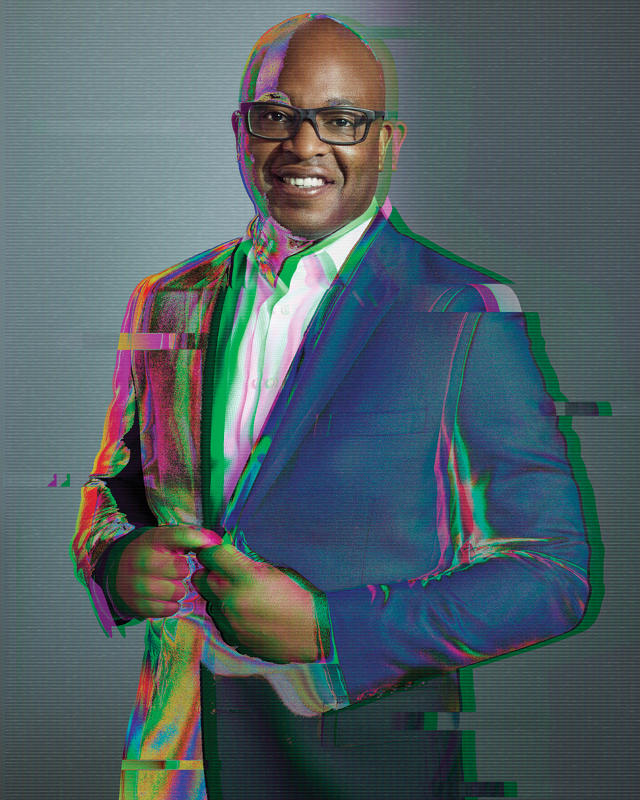
The custom ads that Coleman’s team are promoting are nonetheless considered available in the market by using many entrepreneurs. Coleman recounts one brand exec audibly gasping when shown a two-minute comic vignette that didn’t feel like a tv spot. The video in query, though, has become BuzzFeed’s promoting calling card: The “dear Kitten” campaign for Purina’s Friskies model cat food, where a feline elder statesman (which occurs to be voiced by Ze Frank) faculties a kitty within the methods of the sector—”I remember after I could slot in a shoe. There’s nothing adore it, being engulfed via 360 degrees of foot smell. [Sniff] revel in it whereas which you could.” Hilarious, cuddly, and including an obvious pitch for cat meals, the unique spot has been watched almost 25 million times on YouTube by myself, and nine subsequent videos have racked up any other forty million YouTube views. (“pricey Kitten” has been so a hit that many clients are expecting a monster hit simply find it irresistible. Coleman says he’s needed to information manufacturers to take into account just what BuzzFeed can and can’t do for them: “We never go to a credit score-card company and say, ‘Oh, we’re going to promote one billion credit cards.’ ”)
As Cooper points out, it’s no longer just the tone of the content material that BuzzFeed is difficult, but also the way in which ad programs are developed. rather than contract with a client to produce a collection collection of videos and hope they hit the mark—which is how traditional advert agencies work with clients—BuzzFeed needs to promote companies on the speculation of all of a sudden iterating through a series of videos round a key message in an attempt to find the very best fit for a specific platform. It’s now not all that completely different from how BuzzFeed editors cycle thru posts on a topic like hoverboards except they hit the zeitgeist. there were 4 different Purina movies that hardly any person noticed sooner than “expensive Kitten.”
“It feels like a revolution,” says Cooper, 51. “huge corporations don’t like revolutions. They like predictability. They like incremental boom.” nonetheless, BuzzFeed’s manner is catching on. In August, BuzzFeed and GroupM, a division of WPP, some of the world’s biggest promoting conglomerates, struck a yearlong, multimillion-greenback deal to create and distribute content material collectively, following this model. “Their potential to conceive, create, take a look at, define, after which both abandon or rinse and repeat is phenomenal,” says Rob Norman, GroupM’s chief digital officer. The alliance has already led to video production for thirteen completely different clients, together with Nike, goal, and Unilever, with every other 45 within the pipeline. “We’re spending more cash with them than either of us expected,” Norman says.

Pound and Hive, chaos and comedy, serendipity and quantified metrics: These are the instruments of BuzzFeed’s newfangled global media undertaking. “There’s an opportunity for a up to date media company to be more engaged with the target audience than ever prior to,” Peretti says, “and have a more intimate connection in folks’s lives, to respond and be reactive to the issues that matter to individuals.”
In late November, he invitations me to take a seat in on a visitor lecture at an NYU Stern school of trade type on digital media innovation. In front of a packed auditorium of aspiring MBAs, Peretti, clad casually in his favorite gray hoodie, poses a sequence of questions about how BuzzFeed measures the impression of its work. Does the asset work throughout structures? Does it click on internationally? Does it help individuals join with one every other? Does it make stronger their lives? Does it inform the public and change establishments? Does it make the arena extra open and diverse?
BuzzFeed has answered all of them, whether it’s an editorial titled “29 issues everyone With Nipples should be aware of” that led one reader to talk over with the physician and uncover she had stage 1 breast most cancers or the weekly podcast some other spherical, which not too long ago featured Hillary Clinton as a guest. The cohosts, Heben Nigatu and Tracy Clayton, requested: Did the mass incarceration policies handed right through her husband’s administration “actually fuck [things] up for black individuals” in the U.S.? the answer didn’t go mega-vi, but by no means has Clinton gave the impression extra human.
Peretti is commanding and charming as he leads these four hundred students thru BuzzFeed 201. He’s a rattling just right instructor. “The intellectual problem of seeking to take into account why ideas unfold, how they unfold, human psychology, those forms of things,” Peretti says, “is infinitely rich. I don’t feel such as you ever determine that out.” The extra BuzzFeed remains fascinated about figuring out people, the better a industry it’ll be.
Correction: An past version of this article said that BuzzFeed’s valuation used to be $1.2 billion, it’s at present valued at $1.5 billion.
A model of this text regarded in the March 2016 difficulty of quick company journal.
(34)

